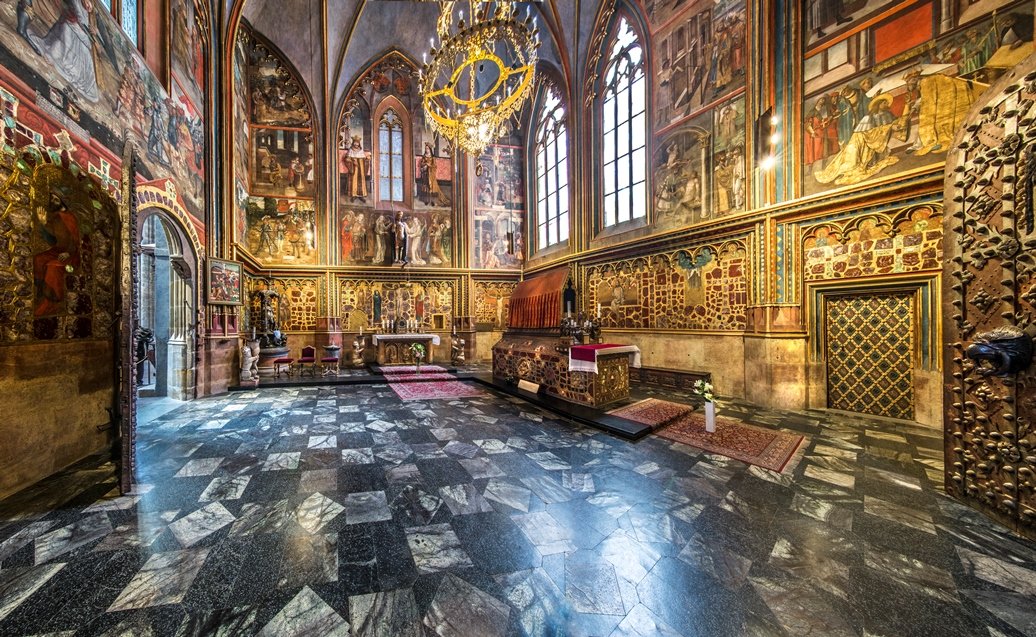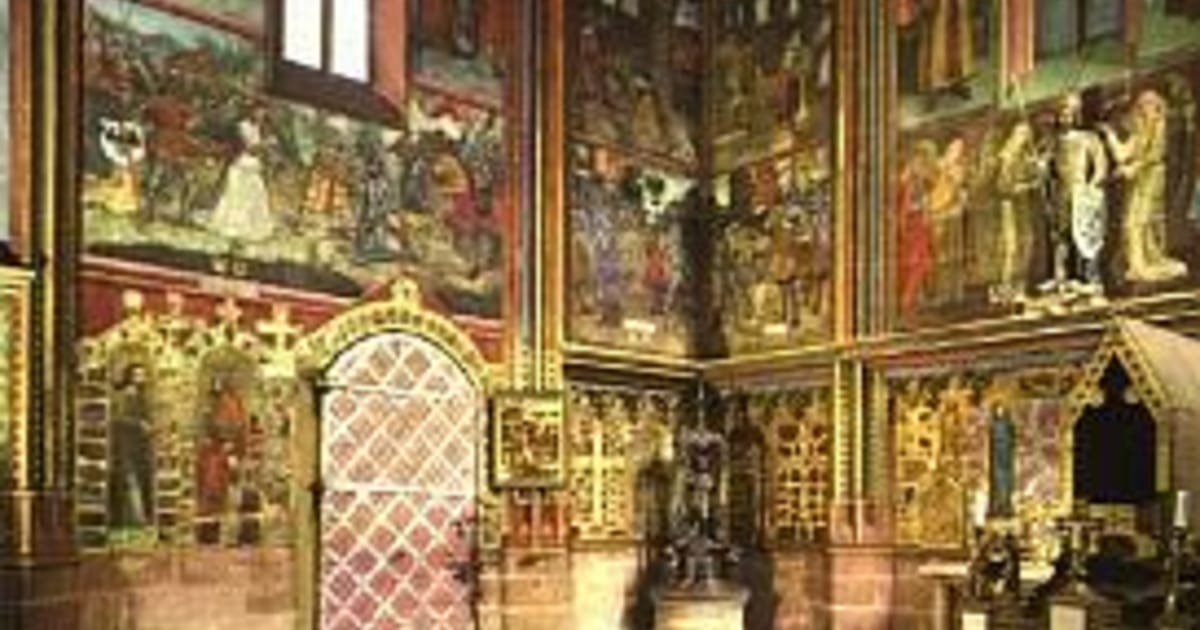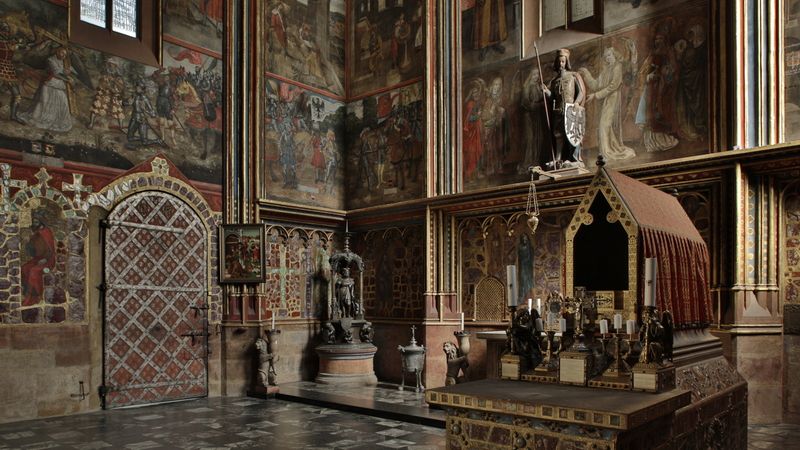“聖ヴィート教会(Kostel sv. Víta)”: A Symbol of Spiritual Grandeur

Introduction:
聖ヴィート教会(kostelsv。vita), In the heart of Prague, the capital city of the Czech Republic, stands a magnificent architectural marvel that embodies centuries of history, spirituality, and artistic excellence – the 聖ヴィート教会 (Kostel sv. Víta), or St. Vitus Cathedral. This iconic structure, nestled within the walls of Prague Castle, is not only a symbol of religious significance but also a testament to the cultural heritage and architectural prowess of the Czech people. With its soaring spires, intricate façade, and rich interior, St. Vitus Cathedral continues to captivate visitors from around the world, inviting them to delve into its storied past and marvel at its timeless beauty.

Historical Background:
The origins of St. Vitus Cathedral can be traced back to the 10th century when Prince Wenceslaus I of Bohemia commissioned the construction of a Romanesque rotunda dedicated to St. Vitus, the patron saint of the Czech Republic. However, it was not until the 14th century that the foundation for the present-day cathedral was laid, under the patronage of Emperor Charles IV. The cathedral’s construction spanned several centuries, with contributions from various architects and craftsmen, resulting in a unique blend of architectural styles, including Gothic, Renaissance, and Baroque elements.
Must Read=聖ヴィート教会(kostelsv。vita)
Architecture:
One of the most striking features of St. Vitus Cathedral is its Gothic architecture, characterized by soaring spires, pointed arches, and intricate stone carvings. The cathedral’s façade is adorned with a stunning array of sculptures depicting biblical figures, saints, and mythical creatures, showcasing the craftsmanship of medieval artisans. The central nave, with its towering vaulted ceilings and slender columns, exudes a sense of grandeur and reverence, while the intricate stained glass windows bathe the interior in a kaleidoscope of colored light. The crown jewel of the cathedral is undoubtedly the Chapel of Saint Wenceslaus, a masterpiece of Gothic architecture housing the relics of the revered Bohemian saint.
Religious Significance:
As the seat of the Archbishop of Prague and the spiritual center of the Czech Republic, St. Vitus Cathedral holds immense religious significance for Catholics around the world. It serves as a place of worship, pilgrimage, and reflection, where the faithful gather to honor the memory of St. Vitus and seek solace in their faith. The cathedral’s rich history is intertwined with that of the Czech nation, having witnessed coronations, royal weddings, and other important ceremonies throughout the centuries. Today, it continues to play a vital role in the religious and cultural life of Prague, hosting regular services, concerts, and special events that attract visitors of all backgrounds.

Artistic Heritage:
In addition to its religious significance, St. Vitus Cathedral is renowned for its artistic heritage, housing a wealth of precious artworks, relics, and historical artifacts. The cathedral’s interior is adorned with exquisite frescoes, sculptures, and altarpieces by renowned artists such as Peter Parler, Albrecht Dürer, and Karel Škréta, reflecting the rich artistic traditions of Bohemia. The Crown Jewels of the Bohemian Kingdom, including the royal scepter, crown, and orb, are also kept within the cathedral, adding to its allure as a cultural treasure trove.
Preservation Efforts: Over the centuries, St. Vitus Cathedral has weathered wars, fires, and natural disasters, yet it has emerged unscathed, thanks to the dedicated efforts of historians, architects, and conservationists. Extensive restoration projects have been undertaken to preserve the cathedral’s structural integrity and safeguard its priceless heritage for future generations. These efforts continue to this day, with ongoing research, maintenance, and conservation work aimed at ensuring that St. Vitus Cathedral remains a shining beacon of Czech culture and spirituality for centuries to come.

FAQ
- What is 聖ヴィート教会(Kostel sv. Víta)?
- 聖ヴィート教会(Kostel sv. Víta), also known as St. Vitus Cathedral, is a famous cathedral located within Prague Castle in Prague, Czech Republic.
- When was St. Vitus Cathedral built?
- Construction of St. Vitus Cathedral began in the 14th century, with various phases of construction continuing over several centuries.
- Who commissioned the construction of St. Vitus Cathedral?
- The construction of St. Vitus Cathedral was commissioned by Emperor Charles IV of the Holy Roman Empire.
- What architectural style is St. Vitus Cathedral?
- St. Vitus Cathedral is primarily Gothic in architectural style, although it also incorporates elements of Renaissance and Baroque architecture.
- What is the significance of St. Vitus Cathedral?
- St. Vitus Cathedral holds immense religious significance as the seat of the Archbishop of Prague and the spiritual center of the Czech Republic.
- Who is the patron saint of St. Vitus Cathedral?
- St. Vitus Cathedral is dedicated to St. Vitus, the patron saint of Bohemia.
- What are some notable features of St. Vitus Cathedral’s architecture?
- Notable features of St. Vitus Cathedral’s architecture include its soaring spires, intricate stone carvings, and magnificent stained glass windows.
- Can visitors enter St. Vitus Cathedral?
- Yes, visitors can enter St. Vitus Cathedral. There may be a small entrance fee for certain areas of the cathedral.
- Are there guided tours available for St. Vitus Cathedral?
- Yes, guided tours of St. Vitus Cathedral are available for visitors who wish to learn more about its history and architecture.
- What are the opening hours of St. Vitus Cathedral?
- St. Vitus Cathedral is typically open to visitors from morning until early evening, but opening hours may vary depending on the season and special events.
- Is photography allowed inside St. Vitus Cathedral?
- Yes, photography is generally allowed inside St. Vitus Cathedral, but flash photography may be prohibited in certain areas.
- Are there any restrictions on attire for visitors to St. Vitus Cathedral?
- While there are no strict dress codes, visitors are encouraged to dress modestly out of respect for the cathedral’s religious significance.
- Can visitors attend religious services at St. Vitus Cathedral?
- Yes, visitors are welcome to attend religious services at St. Vitus Cathedral, including Mass and other ceremonies.
- Is there wheelchair access to St. Vitus Cathedral?
- Yes, there is wheelchair access to certain parts of St. Vitus Cathedral, but some areas may be less accessible due to the historic nature of the building.
- What are some nearby attractions to St. Vitus Cathedral?
- Nearby attractions to St. Vitus Cathedral include Prague Castle, St. George’s Basilica, and the Golden Lane.
- Can visitors climb to the top of the cathedral’s towers?
- Yes, visitors can climb to the top of the cathedral’s towers for panoramic views of Prague, but be prepared for a steep climb!
- Are there any special events or exhibitions held at St. Vitus Cathedral?
- Yes, St. Vitus Cathedral hosts special events, concerts, and exhibitions throughout the year, showcasing its cultural and artistic heritage.
- Is there an admission fee to enter St. Vitus Cathedral?
- While entry to the cathedral itself is free, there may be a fee to access certain areas such as the tower or treasury.
- Can visitors purchase souvenirs or gifts at St. Vitus Cathedral?
- Yes, there are gift shops located within St. Vitus Cathedral where visitors can purchase souvenirs, religious items, and books about the cathedral’s history.
- How can I learn more about the history of St. Vitus Cathedral?
- Visitors can learn more about the history of St. Vitus Cathedral through guided tours, audio guides, informational pamphlets, and online resources.
Conclusion:
In conclusion, 聖ヴィート教会 (Kostel sv. Víta), or St. Vitus Cathedral, stands as a symbol of spiritual grandeur, architectural excellence, and cultural heritage in the heart of Prague. From its Gothic spires to its sacred relics, the cathedral embodies the rich history and artistic achievements of the Czech people, inviting visitors to embark on a journey through time and faith. As a cherished landmark and UNESCO World Heritage Site, St. Vitus Cathedral continues to inspire awe and reverence, serving as a testament to the enduring power of human creativity and devotion.
